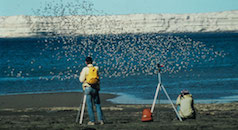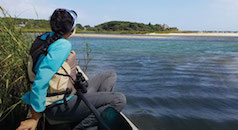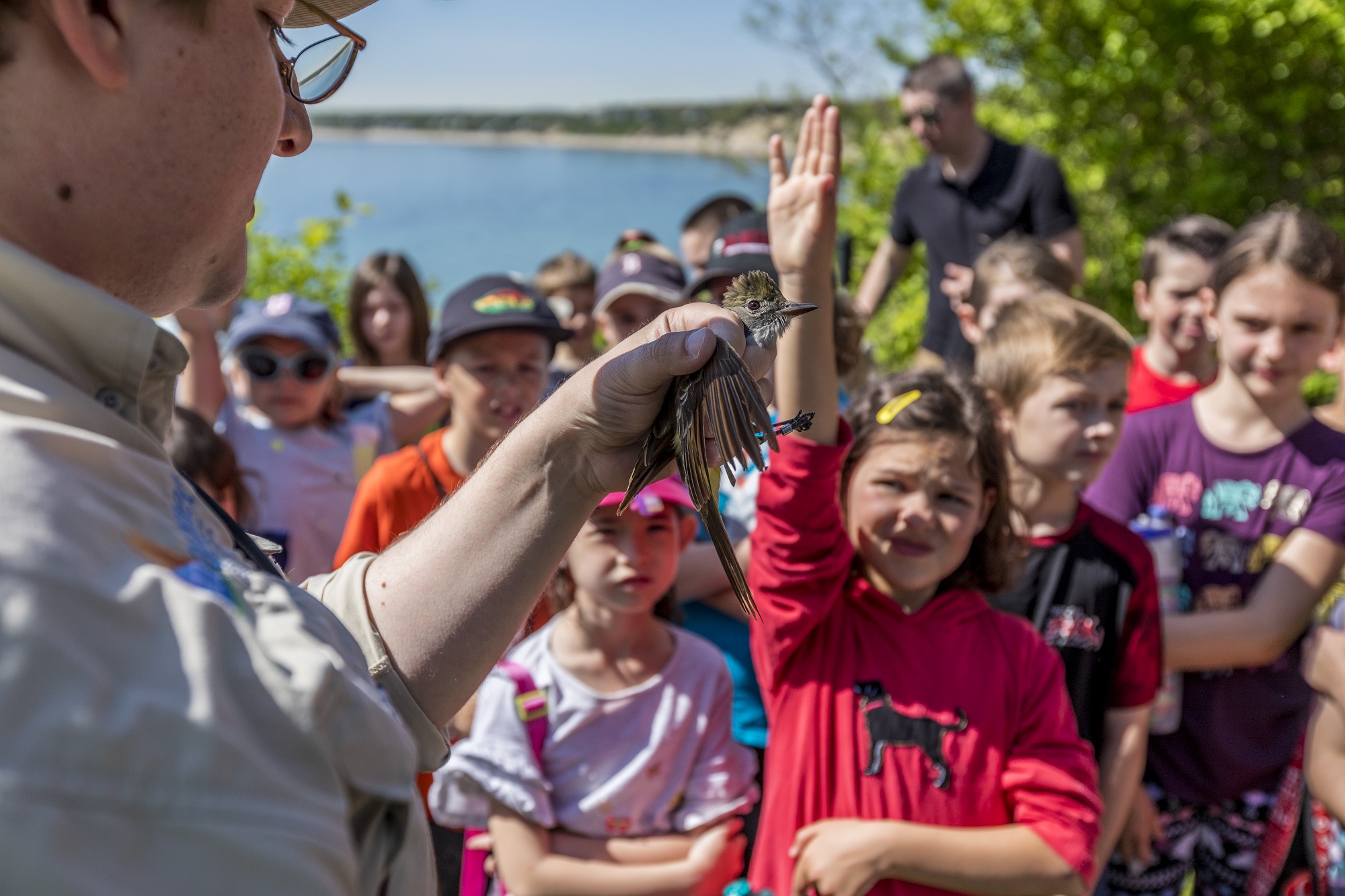Search Results

New England’s Fisheries: The Good, the Bad, and How You Can Help
Amid the upheaval caused by the coronavirus, it is reassuring to know that spring is on track here in New England. Manomet Fisheries staff conducted a survey (which doubled as both forest bathing and a sanity walk) of nearby coastal waters this week and we can report that the spring phytoplankton bloom is well underway! As they do every year, single-celled algae, known as phytoplankton, are flourishing in response to increased sunlight and a replenished nutrient supply; the water is visibly greener [photo]. We are looking forward to the return of the river herring in May; a new grant will allow us to continue our work with community-driven restoration projects. Similarly, our quahog aquaculture experiments, currently overwintering on four oyster...
Green crab fish sauce, anyone? Making the most out of the invasive green crabs
Manomet wins Sea Grant award to continue research into value-added food products which utilize green crabs BRUNSWICK, ME – Manomet, as part of a partnership with the University of Maine and others, has been awarded a grant of $83,700 by the Maine Sea Grant program to expand work to develop commercial markets as a mitigation strategy for ecosystem damage and predation by invasive green crabs. Experts from both food and fisheries science— including University of Maine (lead), Manomet, New Hampshire Sea Grant, Chef Ali Waks— will collaborate under this project to assess the potential for utilization of green crab waste streams in novel versions of established food products, like fermented seafood sauce and surimi. The European green crab was brought...
Maine Fishermen’s Forum
Fishing in the Gulf of Maine generates nearly $4 billion each year and provides as many as 100,000 jobs. This economy is threatened if we don’t understand how to adapt to the changes in species brought on by the warming Gulf of Maine. Manomet fisheries scientists Marissa McMahan and Anne Hayden will represent Manomet at the Maine Fishermen’s Forum in Rockport, Maine, from March 5-7. This annual event is the largest gathering of fishermen, scientists, and policymakers in New England and a great place to showcase our work to sustain fish and fishing livelihoods in a changing Gulf of Maine. Manomet believes solving today’s complex global issues like adapting to the warming Gulf of Maine requires bringing together people with diverse points of...
Winners of the 2020 Wade Fellowship and Leddy Award
Each year, Manomet is able to provide additional support to key projects thanks to two internal awards. We are pleased to be able to announce that the following staff and projects are the recipients of the FY2020 awards. The Emily V. Wade Fellowship for Science The Emily “Paddy” V. Wade Fellowship for Science is awarded annually for the purpose of funding “those ideas that best articulate the spirit and excitement of scientific discovery through field research. While field science will be given preference, syntheses and/or compilations of earlier data collected by Manomet scientists, may also be considered.” The award was established to honor Paddy Wade who served as Chair of the Board of Trustees of Manomet from 1993 to 2010...
Flight Feathers
In Chevak, Alaska, right now (January 29, 2020), the temperature is twelve below zero, but it feels like forty below zero with a strong wind out of the northwest. Chevak is a village of Cup’ik people on the coast of the Yukon River Delta. While the coastal village is currently deep into winter, with just seven hours of daylight, rapid day-length gains during the next few months with eventually bring light onto the land for almost twenty-four hours a day. The sun will pump new life into the tundra of the vast Delta surrounding Chevak and other villages, bringing a virtual crescendo of wildlife activity by late May. In the spring seasons of both 2015 and 2016, Manomet’s shorebird biologists...
Ospreys: A dramatic recovery story
Ospreys might be one of the most famous conservation success stories of all time, with populations dipping dangerously low during the mid-20th century due to pesticide use post World War II. Today, Ospreys have bounced back in huge numbers and can easily be found throughout the coastline during the spring and summer months here in New England. But, did you know that Ospreys are actually found on every continent except Antarctica and migrate tremendous distances, just like the landbirds and shorebirds our program staff study? Dr. Alan Poole has been studying Ospreys for 35 years and has written two books on his work with the species. We sat down with him to talk about Ospreys’ amazing resurgence, thoughts on their...
First recorded sighting of a Smooth Mud Crab in Maine
Brunswick, ME – October 8, 2019 – A Manomet scientist found the first recorded Smooth Mud Crab in Maine while doing research on quahog aquaculture last week. The Smooth Mud Crab, which has a native range from the Gulf of Mexico to Massachusetts’ Vineyard Sound, is commonly found in shallow coastal habitat and is known to prey upon juvenile oysters and other small invertebrates. “After checking numerous sources, we believe this is the first recorded sighting of a Smooth Mud Crab in Maine,” said Dr. Marissa McMahan, Manomet’s Fisheries Division Director who found the crab in an oyster bag in the New Meadows River in West Bath, Maine. “The Smooth Mud Crab typically likes warmer waters than are found here....
Marcela Castellino
Marcela is native to Córdoba, Argentina, where she lives in Miramar de Ansenuza, a small town on the shore of Mar Chiquita Lake, one of the very first WHSRN sites (designated in 1989). She joined the WHSRN Executive Office team in 2019 as a Flyway Conservation Specialist, focused on the conservation of saline lakes. Among her activities, Marcela is working on an update of the Wilson’s Phalarope conservation plan and developing a protocol for boreal winter/austral summer surveys for the species. She is also working to strengthen the connections between communities and conservation efforts at inland salt lakes, with a primary focus on existing WHSRN sites. From 2014 until recently, Marcela was one of the two site representatives for Mar...
We Are Biodiversity
This article was included in our Summer 2019 issue of Manomet Magazine. In March 1932, despite conservation efforts, “Booming Ben,” the single surviving Heath Hen, a grouse-like bird, was seen for the last time on Martha’s Vineyard. A year later, Henry Beetle Hough posed a rhetorical question in the Vineyard Gazette ‘Is nothing to follow the extinction of this bird except one more lesson in conservation for school books, and a sentimental mourning?’ Indeed, the extinction of the Heath Hen was nothing more—another lesson for school books. Many such lessons have since followed, avian and otherwise. A species winks out. The earth rotates just the same, unencumbered by the loss. Every two years since 1998 The World Wildlife Fund publishes...
Meet ‘the Birdnerd’
As part of our 50th Anniversary celebrations, we’ll be sharing interviews with Manomet’s current and past staff, former interns, and Board members. We’re kicking this off by catching up with Jason “the Birdnerd” St. Sauver, Director of Education & Outreach for Audubon Nebraska and a Manomet banding intern back in 2006-07. Jason recently was awarded the 2019 “Educator of the Year” by National Audubon Society. Looking back, Trevor Lloyd-Evans, Manomet’s Director of Landbird Conservation, recalls Jason as “a very charismatic teacher for groups when he was a banding intern here at Manomet” so he wasn’t surprised by this “very well-deserved recognition of Jason’s talent for teaching, innovation, and leadership.” “Manomet – and Trevor’s - impact on young banders/biologists cannot be...



